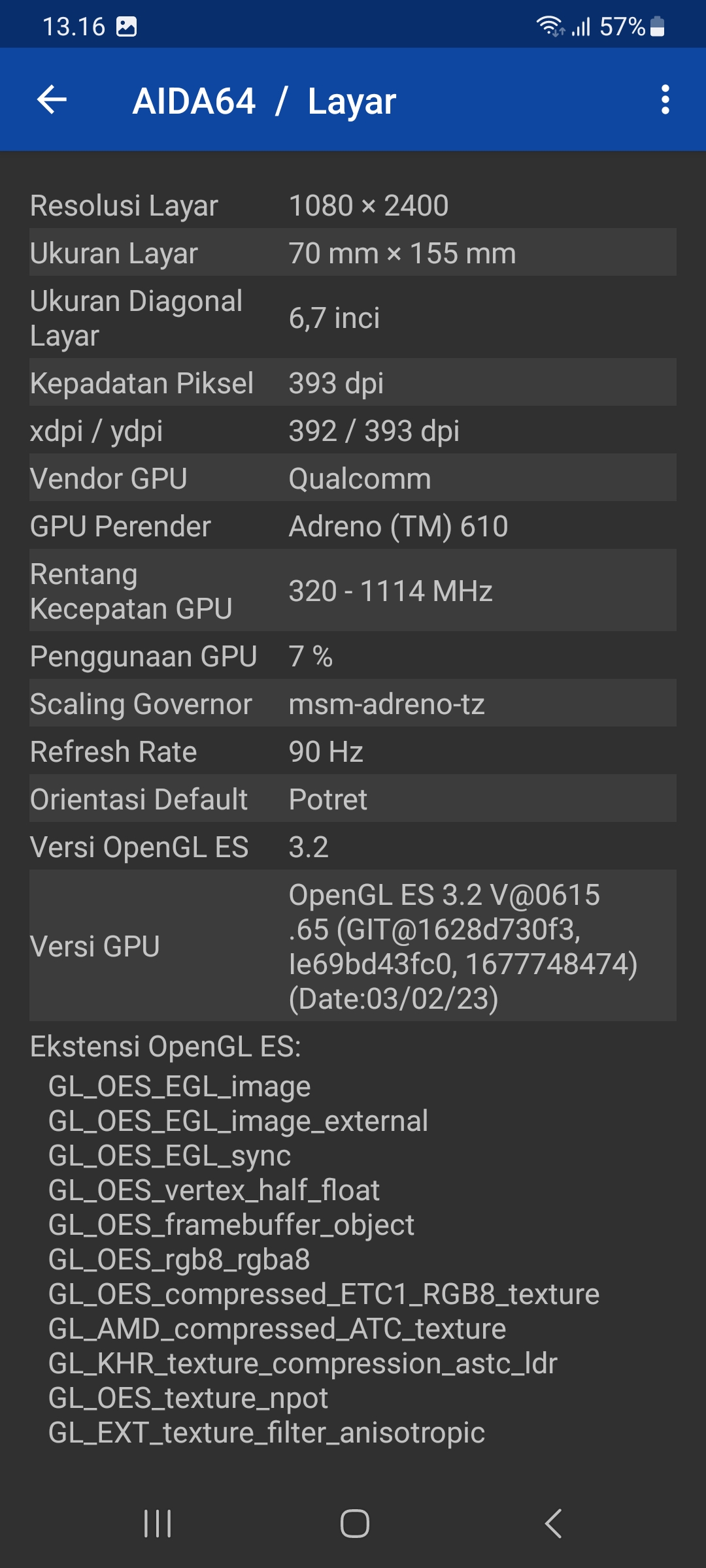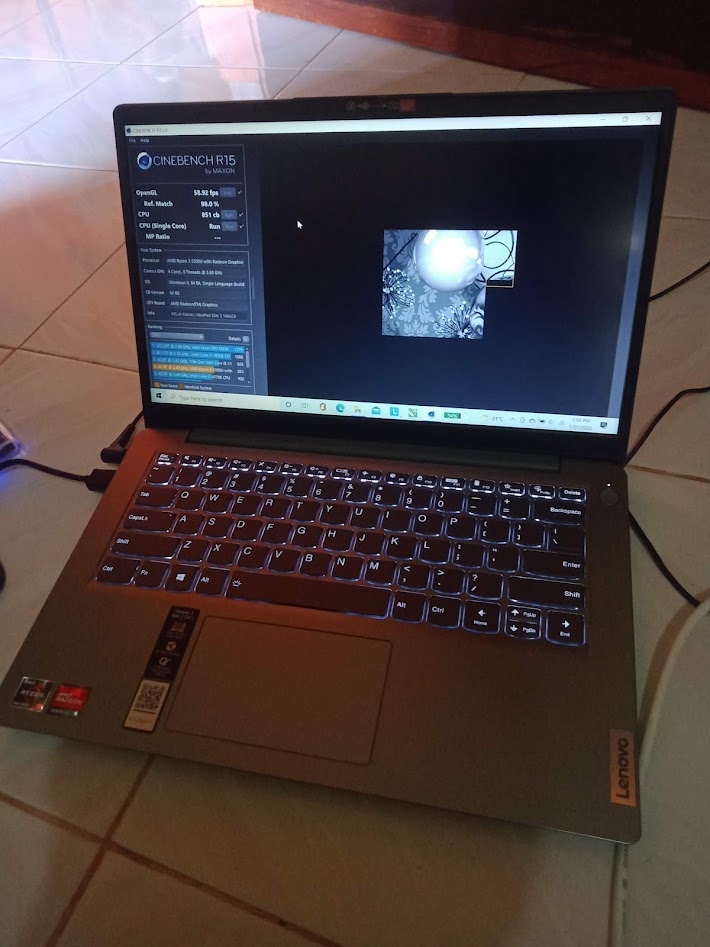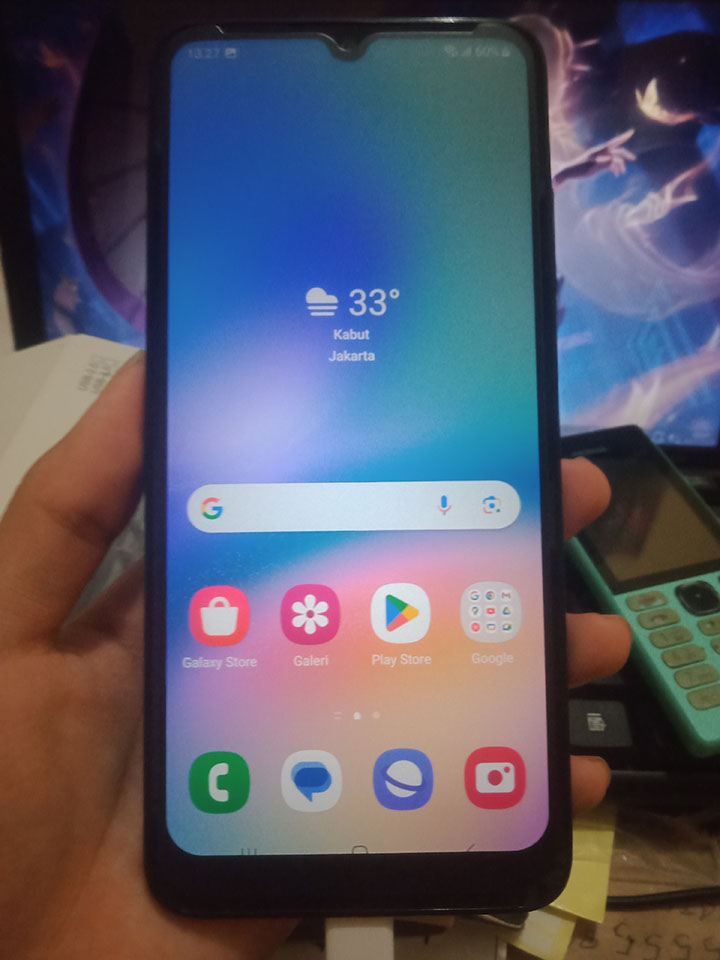Comparing: AMD Radeon Graphics Mobile (Lucienne, 384 Shaders) vs Qualcomm Adreno 610
In this comparison, we analyze two Videocards: AMD Radeon Graphics Mobile (Lucienne, 384 Shaders) and Qualcomm Adreno 610, using synthetic benchmark tests to evaluate their overall performance. This side-by-side comparison helps users understand which hardware delivers better value, speed, and efficiency based on standardized testing. Whether you're building a new system or upgrading an existing one, this benchmark-driven evaluation offers valuable insights to guide your decision.

AMD Radeon Graphics Mobile (Lucienne, 384 Shaders)
| Type: | Videocards |
|---|---|
| Brand: | AMD |
| Model: | Radeon Graphics Mobile (Lucienne, 384 Shaders) |
Specification Comparison Table
This specification comparison presents technical details of several devices or components to help you understand the key differences between each option. Use this table as a reference to determine which device best suits your needs.
| Specification | AMD Radeon Graphics Mobile (Lucienne, 384 Shaders) | Qualcomm Adreno 610 |
|---|---|---|
| Architecture | GCN 5.1 | Adreno 600 |
| Codename | Lucienne | - |
| Buswidth | 128 bit | - |
| Clock | 1500 MHz - - | 1.1 GHz - - |
| Memory Clock | 2GB DDR4 (SHARED) | SHARED |
| Technology | 7 nm | 11 nm |
| Interface | IGP | IGP |
| Technology | 7 nm | 11 nm |
| Segment | Laptop | Mobile |
Submission Comparison Table
This submission comparison table displays the number and details of benchmark data submissions from various devices or components. This information helps you understand the performance based on the benchmarks that have been tested, as well as providing an overview of the consistency and popularity of the available benchmark results.
Submission Comparison Chart
This chart visualizes the benchmark scores comparison between two hardware devices based on submitted data.
Media Gallery
A collection of photos of tested hardware. These images can help you identify the physical form, model, and variant of the hardware in question. These photos are from our own documentation, and if they are not available we may not be able to document them.
About Hardware AMD Radeon Graphics Mobile (Lucienne, 384 Shaders)
The AMD Radeon Graphics Mobile (Lucienne, 384 Shaders) is the integrated GPU featured in the AMD Ryzen 5 5300U, leveraging the powerful and efficient Vega architecture. This GPU packs 384 stream processors (also known as shaders) running at clock speeds up to 1.5 GHz, striking a fine balance between performance and power consumption. Manufactured using advanced 7nm fabrication technology, it offers excellent energy efficiency, making it an ideal choice for thin and light ultrabooks that require good graphical capabilities without compromising battery life. While it cannot compete with dedicated discrete GPUs, the Radeon Graphics integrated in the Ryzen 5 5300U delivers strong performance for everyday multimedia tasks such as HD video playback, photo editing, and casual gaming.
In terms of gaming, the Radeon Graphics excels in handling popular eSports titles like CS:GO, Valorant, and Dota 2, providing smooth gameplay at resolutions ranging from 720p up to 1080p with low to medium graphics settings. This makes it a great option for gamers on a budget or users who want to enjoy light gaming without the need for an expensive dedicated GPU. When compared to integrated Intel GPUs in the same segment, the Radeon Graphics in the Ryzen 5 5300U generally outperforms them due to the mature Vega architecture and higher number of shaders, offering better frame rates and graphical fidelity.
Despite its strengths, this integrated GPU still faces limitations with modern AAA games that demand more graphical horsepower and VRAM, where a discrete GPU becomes necessary for an optimal experience. Nonetheless, for users prioritizing a balanced performance-to-power ratio in a compact form factor, the AMD Radeon Graphics Mobile on the Ryzen 5 5300U remains a compelling choice for mid-range laptops, offering solid graphics capabilities for daily tasks, multimedia consumption, and casual gaming.
Hardware Detail:
Device: Lenovo IdeaPad Slim 3 14ALC6
CPU: Ryzen 3 5300U
RAM: 8GB DDR4 3200MHz Dual Channel (2x4GB)
OS: Windows 10, Windows 11
Saturday, 12 March 2022 11:04:31 | Update: 1 month ago
About Hardware Qualcomm Adreno 610
Qualcomm Adreno 610 is a mid-range integrated GPU designed to provide an efficient graphics experience on a wide range of Android devices. The GPU is part of Qualcomm's 6th generation graphics architecture family and is commonly found on chipsets such as Snapdragon 665 and Snapdragon 680, which are widely used in mid-range smartphones. With full support for modern graphics APIs such as OpenGL ES 3.2, Vulkan 1.1, and DirectX 12, Adreno 610 offers good compatibility with the latest Android games and apps, ensuring users can enjoy visual content smoothly and responsively.
In terms of graphics performance, Adreno 610 is designed to support gaming experiences up to Full HD 1080p resolution, providing stable frame rates in light to medium games. While graphics-heavy games may require adjustments to low or medium settings, the Adreno 610 is still capable of running most popular titles quite well. Benchmark testing using a Samsung Galaxy A05s device sporting a Snapdragon 680, 6GB RAM, and 128GB UFS storage showed a score of 40,326 points in AnTuTu v10 GPU and 51,397 points in AnTuTu v9 GPU, illustrating decent graphics performance in its class.
In addition, the score of 348 points on Geekbench 6 Compute reflects the GPU's capability in handling light graphics computing and AI tasks such as image processing, augmented reality (AR), and UI optimization. In the 3DMark Sling Shot Extreme benchmark, the Adreno 610 registered 1,484 points, showing solid performance in OpenGL ES 3.1-based graphics processing. The GPU also supports hardware-based video decoding for efficient codecs such as HEVC (H.265) and VP9, allowing users to enjoy high-quality video with low power consumption - ideal for streaming or watching long videos.
With a balance between power efficiency, support for the latest graphics technology, and performance that is capable enough for daily needs, Qualcomm Adreno 610 is the perfect GPU solution for mid-range smartphones that prioritize battery life, casual gaming experience, and smooth multimedia. For users looking for stable performance without sacrificing energy efficiency, Adreno 610 is still a relevant and competitive choice this year.
Device Test:
Device: Samsung A05s
Device Specs: Snapdragon 680, 6GB RAM, 128GB UFS, Android 13.
Room Temperature: 30 celcius based on DHT11 Sensors
* Testing was carried out when the device was in new condition, with the latest operating system update, One UI 5.1, default settings
Thursday, 11 January 2024 23:34:40 | Update: 1 month ago



